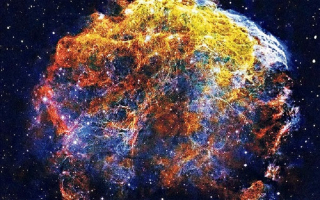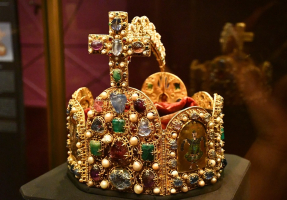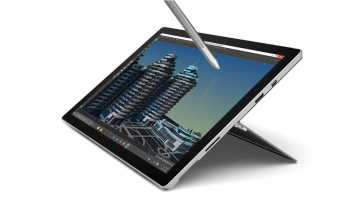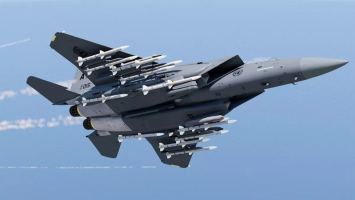Top 9 Most Expensive Science Experiments
The many revolutionary scientific breakthroughs of the twentieth and twenty-first centuries have profoundly transformed how the modern world lives and thrives. ... read more...While the greater societal advantages (or repercussions) of scientific investments are unquantifiable, these improvements are unquestionably financial investments in experimentation. Every year, scientists, academics, governments, and businesses invest billions–if not trillions–of dollars in science studies in the hopes that the long-term payback would be worthwhile. So, what are the costs of some of history's most important scientific experiments? Let’s take a look at the ten of the most expensive science experiments in human history.
-
From 1981 until 2011, the United States National Aeronautics and Space Administration (NASA) operated the Space Shuttle program, which provided routine transportation for personnel and cargo from Earth to orbit. The Space Transportation System (STS) was derived from a 1969 design for a reusable spaceship system, of which it was the only component funded for development. It completed 135 flights and transported 355 astronauts from 16 nations, many of whom traveled on several occasions.
The Space Shuttle was made up of an orbiter with two reusable solid rocket boosters and a disposable external fuel tank that was propelled into space. It could carry up to eight people and a payload of up to 50,000 lb (23,000 kg) into low Earth orbit (LEO). The orbiter would reenter the Earth's atmosphere and land like a glider at either the Kennedy Space Center or Edwards Air Force Base after its mission was completed.
Cost: $174 Billion
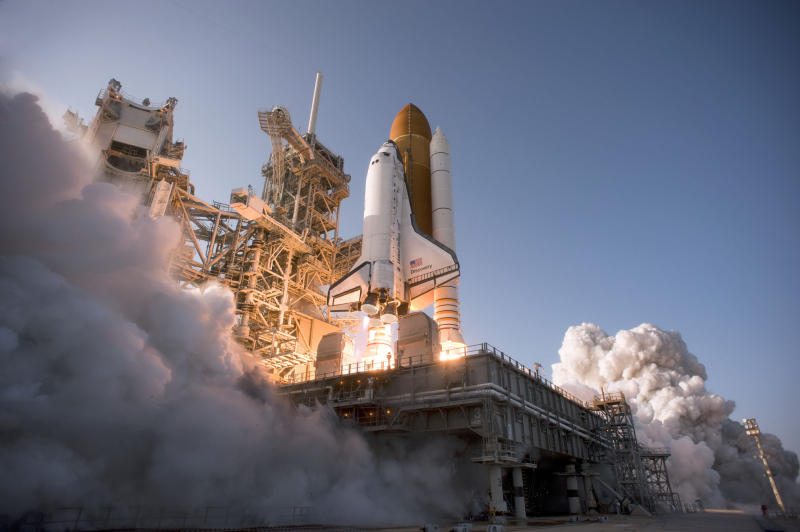
Source: space.com 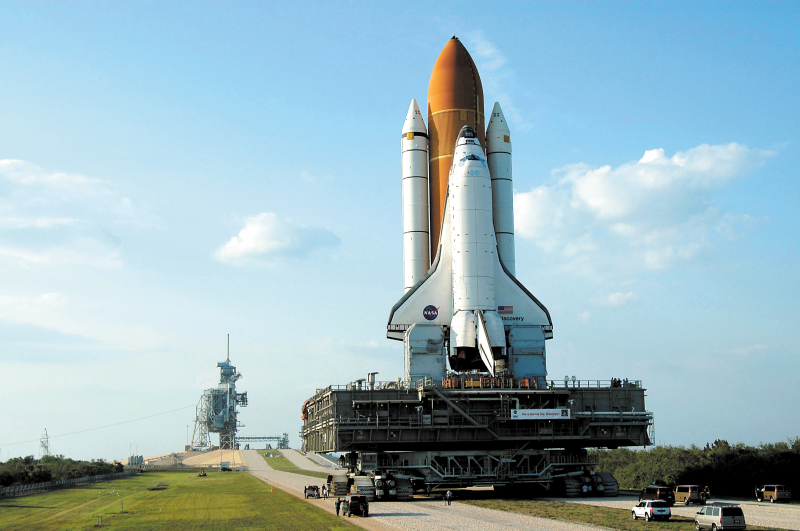
Source: schriever.spaceforce.mil -
The International Space Station (ISS) is a low-Earth-orbiting modular space station (habitable artificial satellite). NASA (United States), Roscosmos (Russia), JAXA (Japan), ESA (Europe), and CSA (Canada) are among the five space agencies involved in the project (Canada). Intergovernmental treaties and agreements control the ownership and usage of the space station. The station acts as a microgravity and space environment research laboratory, where astrobiology, astronomy, meteorology, physics, and other subjects are studied. The International Space Station is ideal for testing spacecraft systems and equipment for potential long-duration trips to the Moon and Mars.
The International Space Station was designed to serve as a laboratory, observatory, and factory while also providing transportation, maintenance, and a staging station for future expeditions to the Moon, Mars, and asteroids. However, not all of the uses envisioned in NASA and Roscosmos' first memorandum of the agreement have been achieved. The ISS was assigned new tasks under the 2010 United States National Space Policy, including economic, diplomatic, and educational missions. As of August 2019, the space station has completed 218 spacewalks while orbiting the Earth sixteen times every day. The total cost of this project was $150 billion.
Cost: $150 billion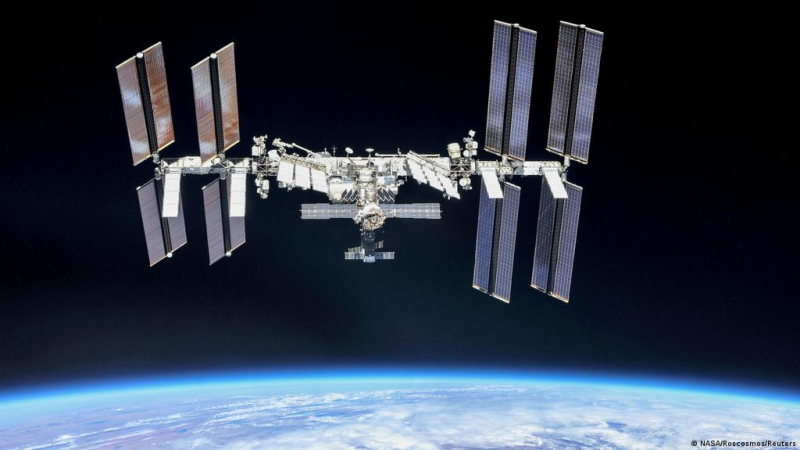
Source: dw.com -
The Large Hadron Collider (LHC) is the largest and most powerful particle collider in the world. It was constructed between 1998 and 2008 by the European Organization for Nuclear Research (CERN) in partnership with nearly 10,000 scientists, hundreds of institutions and institutes, and more than 100 nations. It is located near Geneva, in a tunnel with a radius of 27 kilometers (17 miles) and a depth of 175 meters (574 feet). The construction of the Large Hadron Collider took a decade and cost $4.75 billion. The majority of the funds came from European countries such as Germany, the United Kingdom, France, and Spain.
Many physicists hope that the Large Hadron Collider will aid in the resolution of some of physics' most fundamental open questions, such as the fundamental laws governing interactions and forces among elementary objects, the deep structure of space and time, and, in particular, the interrelationship between quantum mechanics and general relativity. Data from high-energy particle experiments are also required to determine which versions of current scientific models are more likely to be correct – specifically, to choose between the Standard Model and the Higgsless model, as well as to validate their predictions and allow for further theoretical development.Cost: $4.75 billion
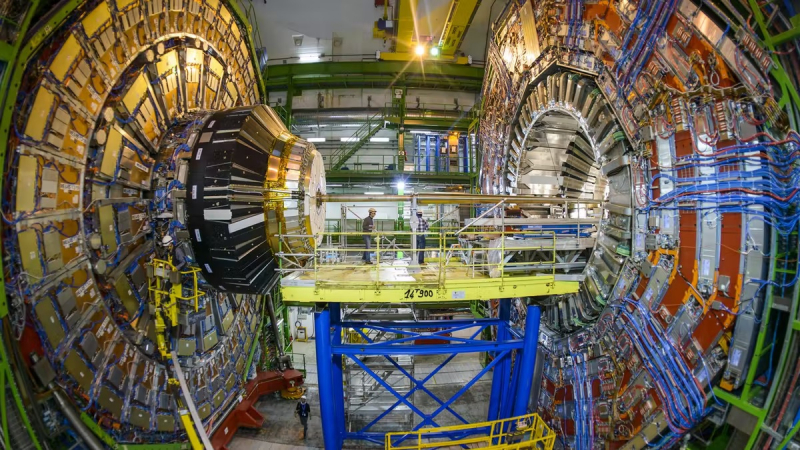
Source: theconversation.com -
The National Ignition Facility (NIF) at Lawrence Livermore National Laboratory in Livermore, California, is a massive laser-based inertial confinement fusion (ICF) research equipment. In order to induce nuclear fusion reactions, NIF employs lasers to heat and compress a tiny quantity of hydrogen fuel. NIF's aim is to accomplish high-energy fusion ignition and to enhance nuclear weapon maintenance and design by investigating the behavior of matter under nuclear weapon conditions. NIF is the world's largest and most energetic ICF device, as well as the world's largest laser.
This is the world's biggest laser apparatus, costing roughly $3.5 billion to build. This is quite a large number that makes it included in this list of the most expensive science experiments. This project intends to create nuclear weapons by using lasers to trigger nuclear fusion events. This gadget aids in the development of nuclear weapons as well as the production of carbon-free energy.
Price: Around $3.5 billion
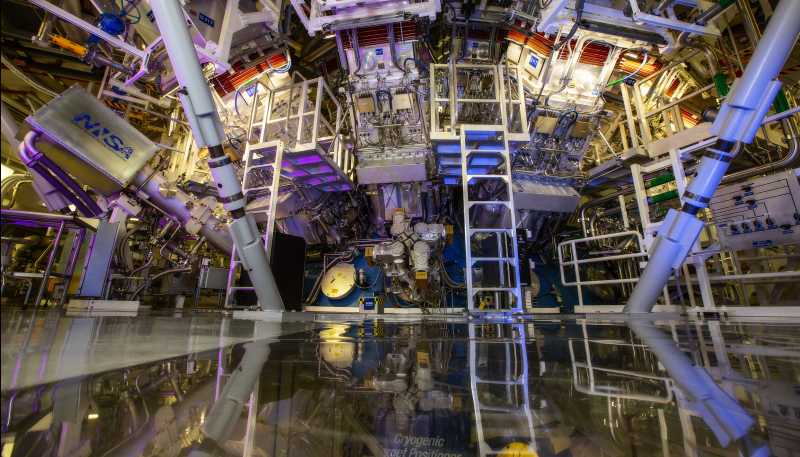
source: phys.org -
Curiosity rover is a car-sized Mars rover that is part of NASA's Mars Science Laboratory (MSL) mission to investigate the Gale crater on Mars. This rover is about the size of a car and costs $2.5 billion. Curiosity was launched from Cape Canaveral (CCAFS) on November 26, 2011, and landed on Aeolis Palus on Mars on August 6, 2012. After a 560 million km (350 million mi) trek, the rover's touchdown target was less than 2.4 km (1.5 mi) from the Bradbury Landing site.
The mission's objectives include studying the Martian climate and geology, determining whether the chosen field site inside Gale has ever provided favorable environmental conditions for microbial life (including looking into the role of water), and conducting planetary habitability studies in preparation for human exploration. On Mars, the Curiosity rover discovered unexplainable oxygen. This car-sized rover has been exploring Mars for the past ten years. However, NASA announced that this system had had a little setback since the robot was unaware of its orientation and position on another planet, but the rover's success remained outstanding.
Cost: $2.5 billion
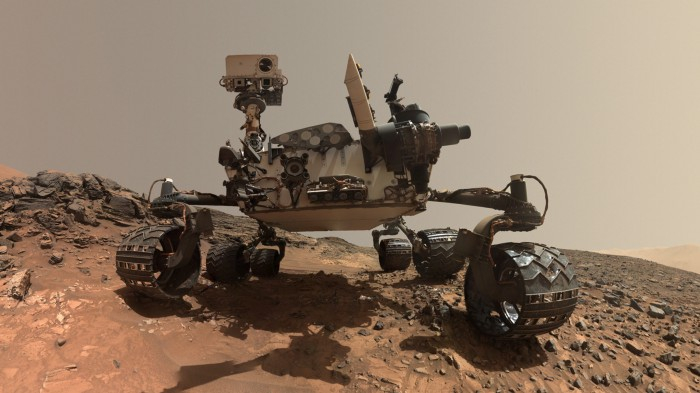
Source: Nasa’s Mars Exploration Program -
NASA intended to deploy the Mars 2020 rover after Curiosity's success. Mars 2020 is a rover mission for Mars that is part of NASA's Mars Exploration Program, which also includes the Perseverance rover and the Ingenuity tiny robotic coaxial helicopter. This comprises a little robot that has been in operation for over fourteen years. Its goal was to focus on Mars' previous history, including historical topography, regardless of whether or not life had ever lived on the planet. The cost was estimated at $2.46 billion. On 30 July 2020, Mars 2020 was launched from Earth on an Atlas V rocket, and confirmation of landing at the Martian crater Jezero was obtained on 18 February 2021.
The mission will look for evidence of previous habitable circumstances on Mars, as well as evidence – or biosignatures – of past microbial life and water. The mission was launched on an Atlas V-541 on July 30, 2020, and was overseen by the Jet Propulsion Laboratory. NASA's Mars Exploration Program is behind the effort. The Science Definition Team suggested that the rover gather and package up to 31 samples of rock cores and surface soil for further examination on Earth by a future mission. They expanded the concept in 2015, hoping to collect even more samples and disperse the tubes throughout the surface of Mars in little heaps or caches.
Cost: $2.46 billion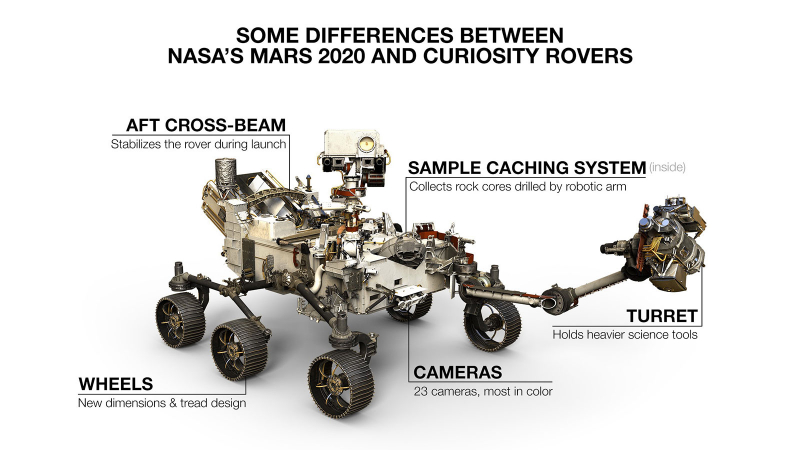
source: mars.nasa.gov -
During World War II, the Manhattan Project was a research and development project that resulted in the first nuclear weapons. It was led by the United States, with the United Kingdom and Canada on board. Robert Oppenheimer, a nuclear scientist, was the director of the Los Alamos Laboratory, which created the bombs. The Manhattan District was given to the Army component of the project since its early headquarters were in Manhattan; the placename subsequently replaced the official codename for the whole project, Development of Substitute Materials.
The project absorbed its previous British equivalent, Tube Alloys, along the way. The Manhattan Project began modestly in 1939 but eventually developed to employ over 130,000 people and cost about $2 billion (around $23 billion in 2020). Building factories and creating fissile material accounted for almost 90% of the cost, with weapons development and manufacture accounting for less than 10%. More than thirty locations in the United States, the United Kingdom, and Canada were used for research and production.
Cost: $2 billion
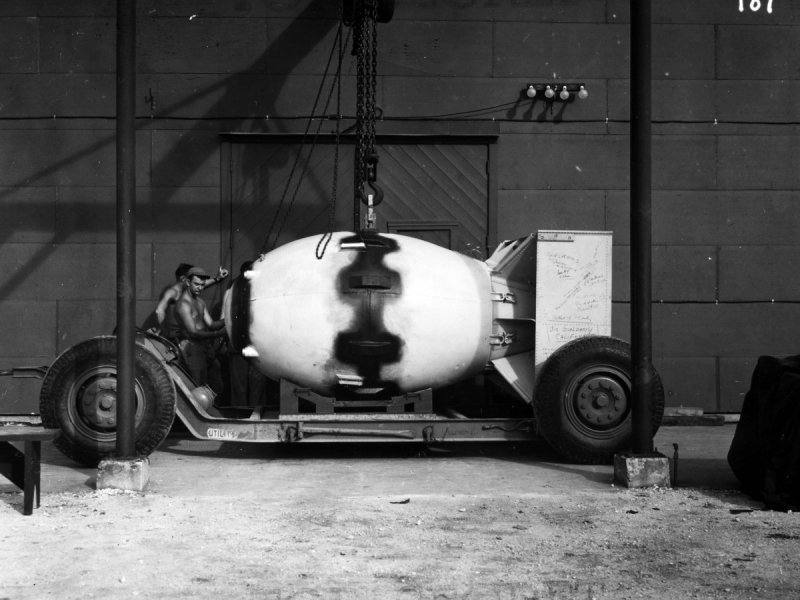
Source: STSTW Media -
The Spallation Neutron Source (SNS) is a US accelerator-based neutron source facility that produces the world's most powerful pulsed neutron beams for scientific and industrial research. Hundreds of researchers from universities, national laboratories, and businesses visit this facility each year to undertake neutron-based fundamental and applied research and technology development. SNS is operated by UT-Battelle for the US Department of Energy and is part of Oak Ridge National Laboratory (DOE). SNS is a DOE Office of Science user resource that welcomes scientists and researchers from across the globe.
Scientists can count scattered neutrons, estimate their energy and scattering angles, and map their ultimate locations using neutron scattering. The molecular and magnetic structure and behavior of materials such as high-temperature superconductors, polymers, metals, and biological samples may be revealed using this information. Neutron scattering research has applications in structural biology and biotechnology, magnetic and superconductivity, chemical and engineering materials, nanotechnology, complicated fluids, and others, in addition to fundamental physics investigations. This $1.4 billion source performs neutron dissipation, which aids researchers in understanding the subatomic design and behavior of metals.Cost: $1.4 billion
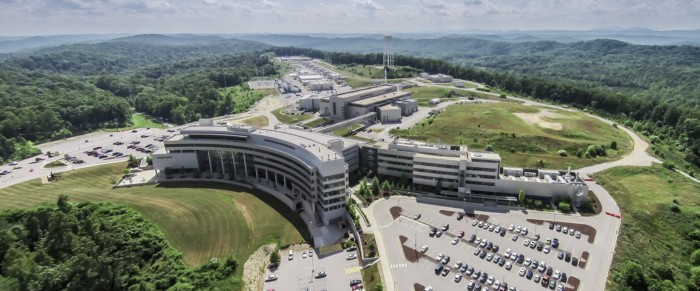
Source: Neutron Sciences -
Juno Spacecraft is a NASA space probe that is circling Jupiter. Lockheed Martin-built it, and NASA's Jet Propulsion Laboratory manages it. As part of the New Frontiers program, the spacecraft was launched from Cape Canaveral Air Force Station on August 5, 2011. On July 5, 2016, Juno Spacecraft entered a polar orbit around Jupiter to begin a scientific examination of the planet. Juno will be purposely deorbited into Jupiter's atmosphere after finishing its mission. NASA launched the Juno spacecraft on August 5, 2011, with a $1 billion expenditure. Since 2016, this spacecraft has been revolving around Jupiter.
Jupiter's composition, gravitational field, magnetic field, and polar magnetosphere are all being measured by Juno Spacecraft. It will also look for indications about how the planet evolved, such as whether it has a rocky core, how much water is present in the deep atmosphere, mass distribution, and the speed of its deep winds, which may exceed 620 km/h.
Cost: $1 billion
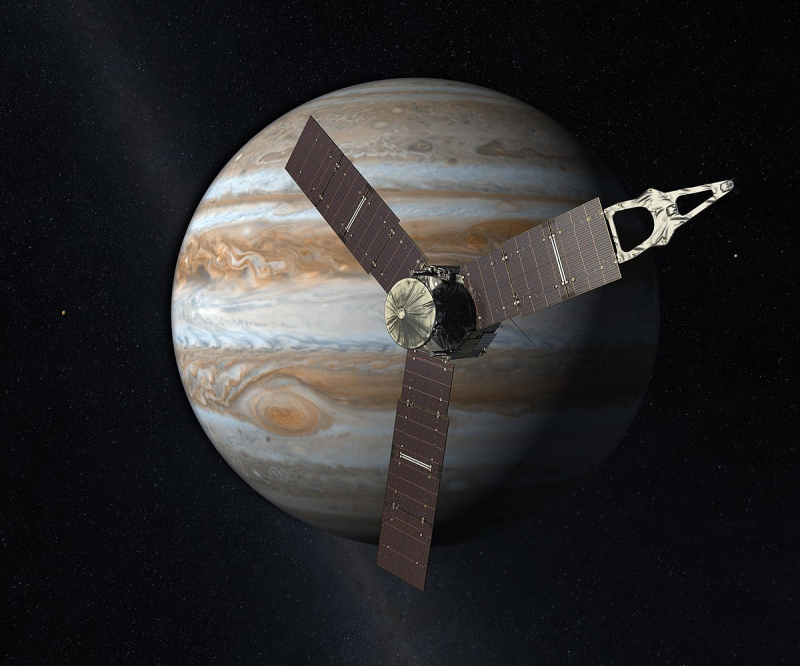
Source: vi.wikipedia.org 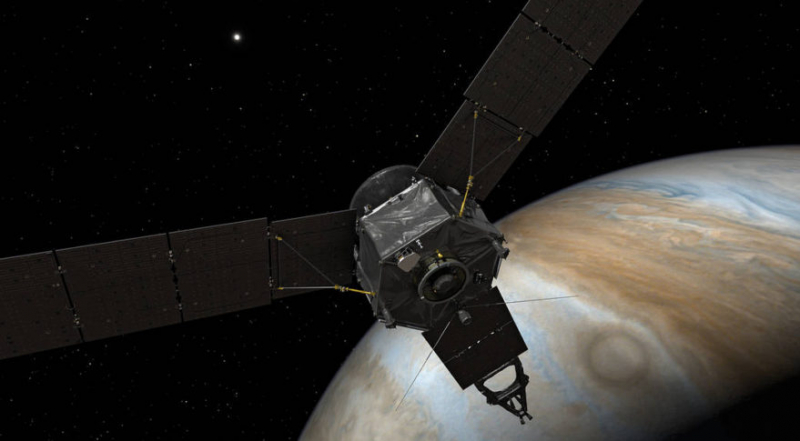
Source: spacenews.com

















